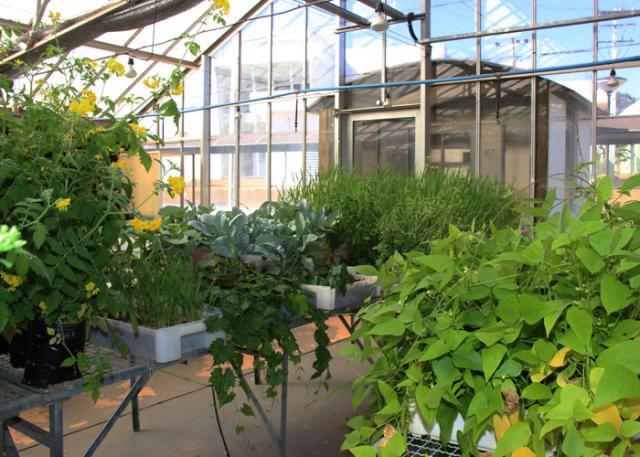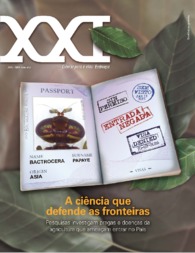Embrapa stopped over 70 agricultural pest species from entering Brazil
Embrapa stopped over 70 agricultural pest species from entering Brazil
A study conducted by Embrapa researchers concluded that, from 1977 to 2013, the quarantine activities developed by the corporation prevented 75 different agricultural pest species from entering Brazil. Between 2014 and 2016, another four species were barred. All of those pests, which include insects, mites, nematodes, fungi, viruses and bacteria, have an attribute in common: they are exotic. In other words, they do not exist in the country and, therefore, the means to fight them are not known.
To give an idea, when a single exotic pest entered Brazil in the early 2000s, the Helicoverpa armigera caterpillar, it caused about USD 1.7 billion of damages to national coffers. If we multiply that figure by the number of intercepted pests, it is possible to estimate that the quarantine work undertaken by Embrapa has spared the Brazilian economy hundreds of billions of dollars.
The study pointed to another relevant and unprecedented conclusion: the exotic pests detained are not related to their country of origin, but rather to the plant part in which they are identified. According to the researcher Marcelo Lopes, author of the paper published at Pesquisa Agropecuária Brasileira - PAB (Brazilian Journal of Agricultural Research) as a result from the study, the incidence of pests intercepted in olive trees, apple trees, lillies and grapevines was 21 times higher that in maize, wheat, rice and cotton. The difference lies in the way the plant material is imported, since the first four crops are exchanged through vegetative propagation, that is, as seedlings and cuttings, while the latter four are sent as seeds.
"The fact that maize, wheat, rice and cotton are the species with the largest volume of imports – maize takes the first place with 755 imports – and yet present low pest contamination levels – 0,4 to 3% – corroborates the association between contamination and exchanged plant part. The important thing is that this survey leads to the indication that seed submission is a safe medium for the international exchange of agricultural crops," the researcher underscores.
The team involved in the study, which, in addition to Lopes, includes the researchers Norton Benito, Márcio Sanches, Denise Návia, Vilmar Gonzaga, Marta Mendes, Olinda Martins and Arailde Urben (Embrapa Genetic Resources and Biotechnology) and Abi Marques and Fernanda Fernandes (Embrapa Plant Quarantine), is going to present such information and other results from the study to the Brazilian Ministry of Agriculture, Livestock and Food Supply (Ministério da Agricultura, Pecuária e Abastecimento - Mapa) during the seminar "Science and Technology to face sanitary threats to Brazilian agriculture", which will be promoted by Embrapa by the end of the year.
Unlisted pests
Another important finding from the study is the high quantity of absent non‑regulated (ANR) pests detected in the plant material they assessed. Those are pests that do not exist in Brazil and that are not included in the list of species of quarantine importance elaborated by Mapa. According to Lopes, 47 species, that is, more than half of the pests Embrapa intercepted, belong to the ANR category. "Such prevalence constitutes an important information for the plant defense system in Brazil", emphasizes the researcher, as they do not have a quarantine status, that is, they are not present in Mapa's list, and, hence, they can escape sanitary barriers.
To conclude that the pest is really exotic in Brazil, exhaustive tests are carried out by a specialized team from the Plant Quarantine Station at Embrapa Genetic Resources and Biotechnology, which is the institution Mapa has officially designated to quarantine all the plants that enter Brazil for research purposes. The analysis involves laboratory procedures to check whether plant materials are contaminated by insects or microorganisms. If the pests detected exist in Brazil, the plants are treated and cleared. If they are exotic, the material is incinerated.
According to the researcher, the information of the high incidence of ANRs will also be reported to the Ministry. "We hope that this study can result in the incorporation of these species to the quarantine pest list, following the example of other countries in Europe, for instance", he asserts. The quarantine status is extremely important because it works as a warning to prevent the pest from entering new territory. "The pests that are not present in the list but do not exist in the country make us vulnerable. That is why we are going to inform them to Mapa so that they can be studied for future regulamentation", Lopes adds.
He believes that the results generated by the study can be used as reference standards for quarantine stations in Brazil. "Since there is not much information about interceptation rates in the literature, the statistics generated by the work can contribute to risk management in those stations", he concludes. The study also offers information about the pests that are most frequently found in exchanged plants, most of which comprise fungi, followed by viruses, mites and nematodes.
Quarantine: a national security issue
The international exchange of plant material is indispensable to enhance genetic heritage and to generate new agricultural varieties. In Brazil, about 80% of the food consumed has exotic origins. One of the worst problems faced in agriculture is the occurrence of harmful organisms that lead to reduced food, fiber and energy production. Such organisms can be classified as pests.
Plant quarantine comprehends activities aimed at preventing the introduction and dissemination of agricultural pests, and it has been a priority for Embrapa since its inception in the 1970s. The company started with the activity with the establishment of a Quarantine Station at Embrapa Genetic Resources and Biotechnology in 1977. In the course of three decades, due to the growth of international trade and the flow of tourists, quarantine activities have intensified, leading the corporation to create a new Unit in 2014 to exclusively deal with such activities: Embrapa Plant Quarantine. The goal is to modernize the analysis of seeds and other propagation materials that are introduced in the country or exchanged with other research institutions.
The paper Interceptações de pragas quarentenárias e ausentes não regulamentadas em material vegetal importado (Interceptions of quarantine and absent non‑regulated pests in imported plant material) is part of a special theme edition of the journal PAB on research, development and innovation in health risk assessment for Brazilian agriculture. The full article is available on the digital version of the publication through the link.
Translation: Mariana de Lima Medeiros
Fernanda Diniz (MTb 4685/89/DF)
Embrapa Genetic Resources and Biotechnology
Press inquiries
recursos-geneticos-e-biotecnologia.imprensa@embrapa.br
Phone number: (61) 3448-4768
Further information on the topic
Citizen Attention Service (SAC)
www.embrapa.br/contact-us/sac/



